Literary Elements Teaching Resources
Are ou teaching literary elements and looking for worksheets and activities to get students excited about tone, narration, plot and a host of other elements to writing a great story? How do you engage elementary students on the concept of character traits and make plot development as exciting as recess?
The ELA teachers on the Teach Starter team have done just that with a collection of printable worksheets and digital activities built around this core reading standard. Aligned with both TEKS and the Common Core English curriculum, each literary elements activity in the collection has undergone a careful review by a member of our teacher team to ensure it's ready for your lesson plans and your students.
Explore our teacher team's guide to learn more about the various literary elements and how to bring them to life in your classroom!
Is this your first year teaching this sector of ELA? Or the first year in a while? Our teacher team has put together a quick refresher to get you ready to rock and roll in the classroom, including a way to explain what literary elements are to students.
What Are Literary Elements? A Kid-Friendly Definition
First thing's first: Let's talk about the definition.
Literary elements are the basic components of writing that the author uses to share the story with the reader. Without them, the narrative falls apart!
They are sometimes referred to as narrative elements. No matter what you call them, these elements give a piece of writing structure and help the author convey information to the reader.
On the reading side, literary elements are also key to breaking down a story to understand better what the author is trying to say.
What Are Examples of Literary Elements? 8 Examples That Can Help Your Students
There are eight main examples of literary elements that students will encounter in narrative texts:
1. Setting
This element is crucial for developing a story as it provides the time in which the story takes place as well as where it takes place. Setting helps ground the story.
2. Plot
The plot is the way a story unfolds. It's essentially a pattern for the text.
3. Conflict
Conflict helps move a plot forward as it offers the reader a climax to move toward as they read.
4. Characterization
This element of writing covers the way characters are developed within a story.
5. Point of View
Also called narration, this literary element is the perspective from which a story is told, such as first person or third person.
6. Tone
The tone of a story can be boiled down to the author's attitude about the subject of the story.
7. Genre
Genre covers the type of story written, such as realistic fiction, science fiction or even magical realism.
8. Figurative Language
Similes, metaphors, and onomatopoeia are just some examples of the figurative language students encounter in a text.
- Free Plan
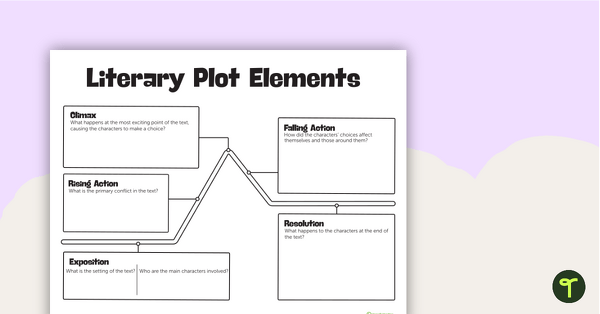
Literary Plot Elements - Graphic Organizer
Familiarize students with finding the 5 elements of plot in a literary text.
- Free Plan
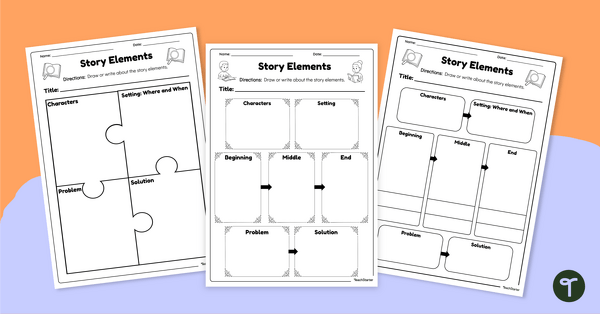
Story Elements Graphic Organizers – Portrait
Encourage your students to write and draw about various story elements with this set of differentiated graphic organizers.
- Plus Plan
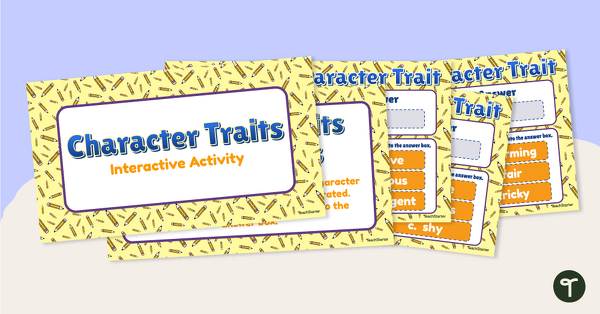
Character Traits: Interactive Activity
Analyze text and identify character traits of characters with a Google Slides Interactive activity.
- Plus Plan

Retelling Stories Teaching Slides
Teach your students all about the fundamentals of retelling a story with this set of teaching slides.
- Free Plan

Character Anchor Charts - Traits, Feelings, and Appearances
A set of 3 posters depicting words and phrases that can be used to describe a character traits, feelings and appearance.
- Free Plan
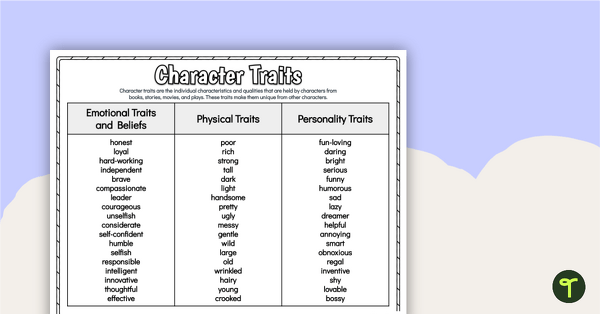
Free Character Traits List
Teach your students to analyze characters more effectively by providing them with a list of character traits.
- Plus Plan
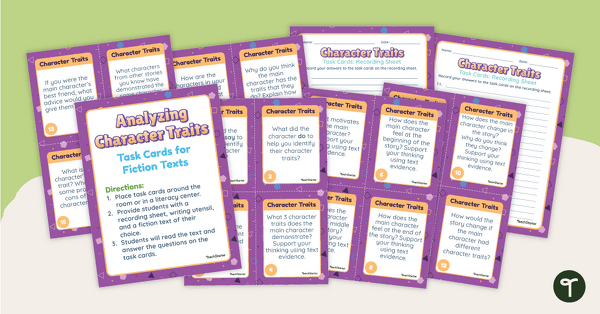
Character Analysis Task Cards
Use these task cards to practice analyzing characters within any fictional text.
- Plus Plan
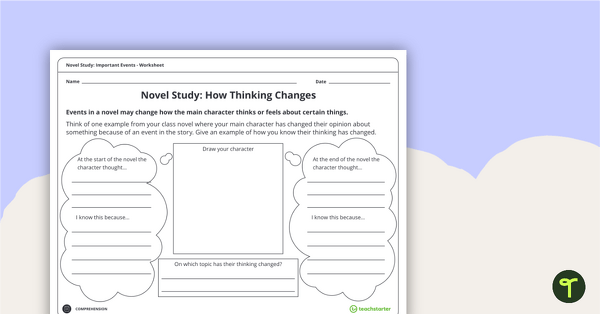
Novel Study - How Thinking Changes Worksheet
Examine how events in a novel can change the main character's thinking with this one-page worksheet.
- Plus Plan
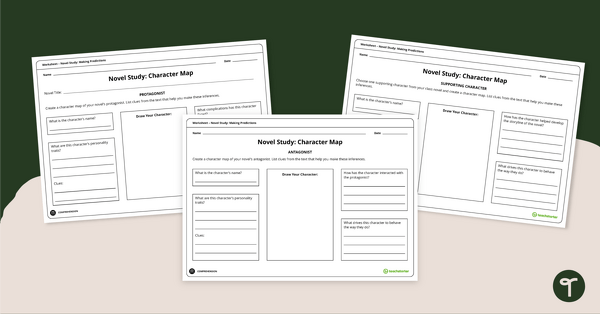
Novel Study – Character Map Worksheet
Explore and analyze the characters in your class novel with this set of three worksheets.
- Plus Plan

Movie Day Activity Menu
Turn a movie day into a learning experience with our printable Movie Day Comprehension menu.
- Plus Plan
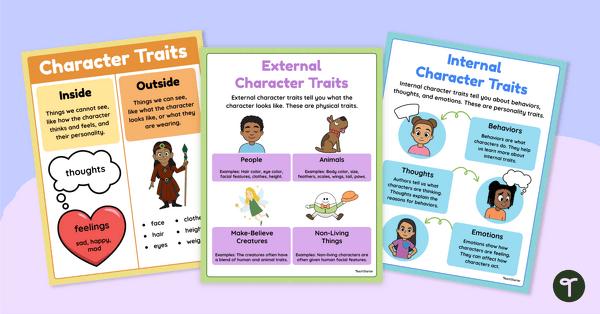
Character Traits Anchor Charts
Remind your students about the difference between external and internal character traits with this set of three classroom anchor charts.
- Plus Plan
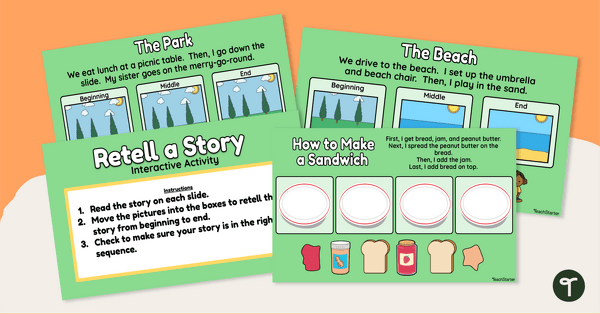
Google Slides Interactive - Story Retell Activity
Use this Google Slides Interactive activity to practice retelling stories.
- Free Plan
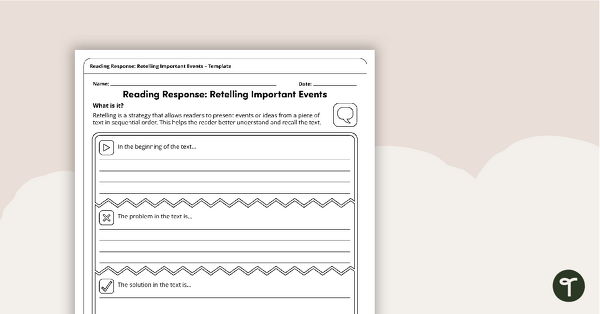
Reading Response Template – Retelling Important Events
Help students retell important events in a piece of text with this one-page template.
- Free Plan
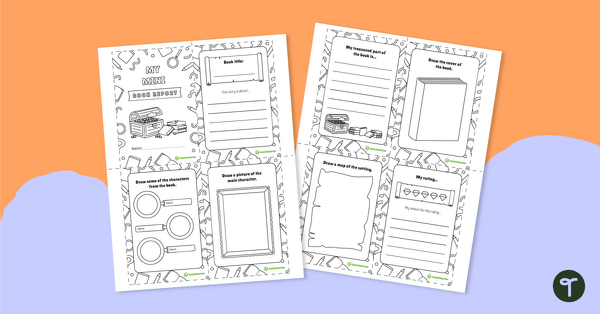
My Mini Book Report
Have students write about their favorite literature with this fun-sized mini-book.
- Plus Plan
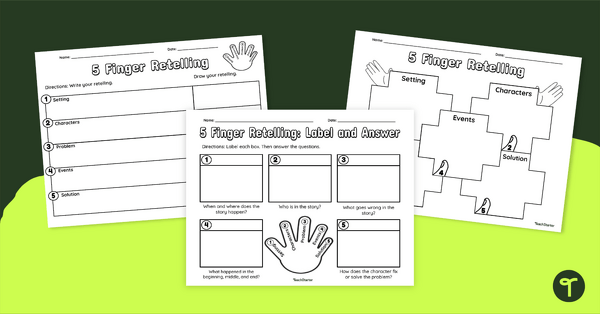
5 Finger Retell Graphic Organizers
Help students sort out their thoughts during retelling with this set of three 5 finger retelling graphic organizers.
- Plus Plan
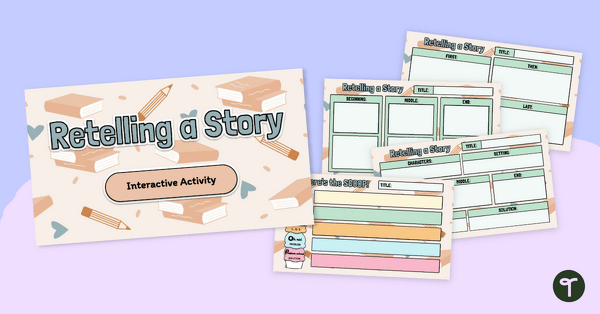
1st Grade Story Retell Interactive Graphic Organizers
Explore the elements of a retell with your students using this digital activity.
- Free Plan
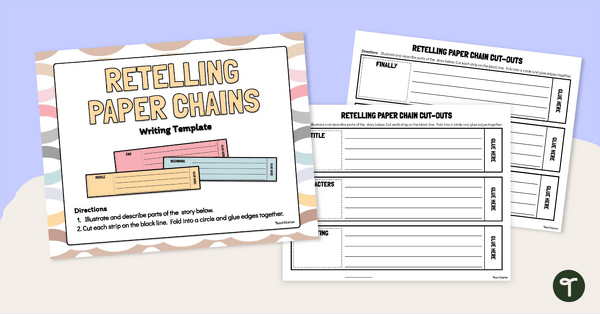
Retelling Stories Paper Chains Template
Get crafty with this fun retelling stories activity where students use paper chains to create a chain for a story they have read in class.
- Plus Plan
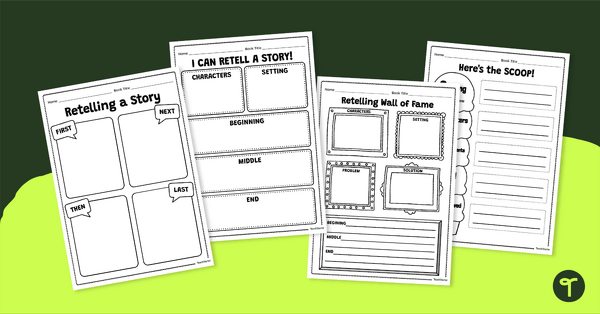
Story Retell Graphic Organizers (Differentiated)
Help students confidently retell a story with this set of differentiated graphic organizers.
- Plus Plan

5 Finger Retell Teaching Slides
Teach your students about the 5 finger retell strategy with this set of teaching slides.
- Plus Plan
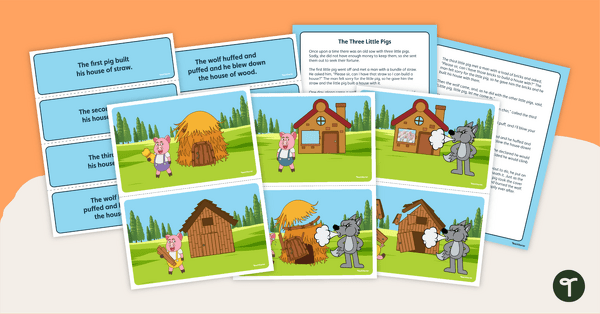
Three Little Pigs Retelling Activity Cards
Teach your students about retelling with this set of sequencing cards for The Three Little Pigs.
- Plus Plan

Introduction to Story Characters Teaching Slides
Introduce your students to the wonderful world of story characters with this visually appealing teaching presentation.
- Plus Plan
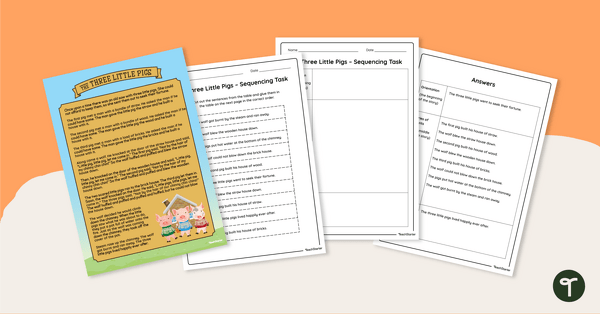
Three Little Pigs – Sequencing Worksheet
Identify the story beginning, series of events and ending with this narrative text sequencing activity.
- Plus Plan
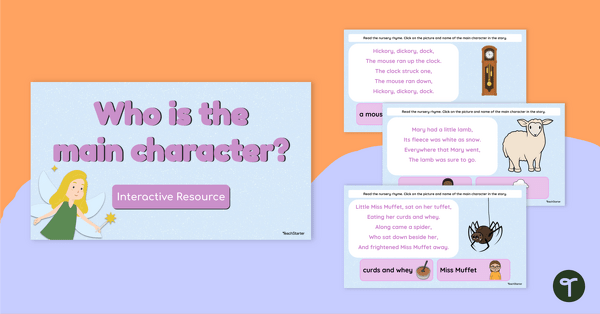
Who Is the Main Character? Interactive Game
Practice identifying the main characters in nursery rhymes with this interactive digital activity.
- Plus Plan
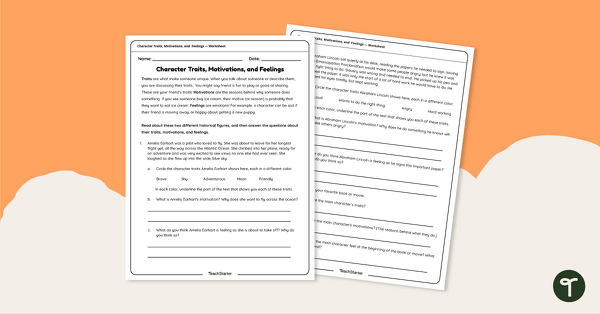
Character Traits, Motivations and Feelings Worksheet
Analyze character traits, feelings and motivations with this two-page worksheet.
- Plus Plan
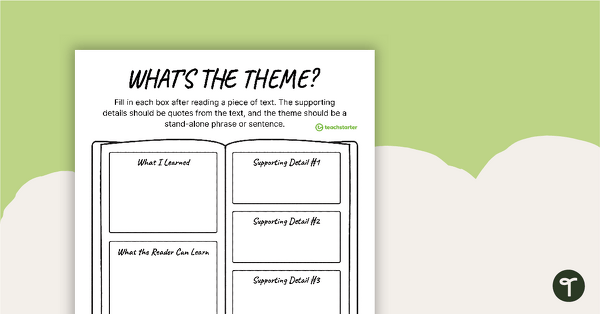
What's the Theme? - Graphic Organizer
Outline and determine the theme of a text with this 1-page graphic organizer worksheet.
- Plus Plan
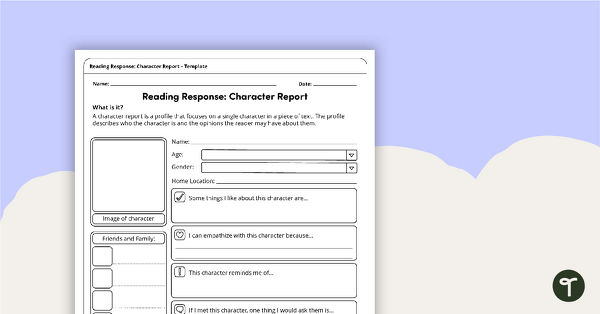
Reading Response Template – Character Report
Analyze a character in a piece of text with this one-page reading response template.
- Plus Plan
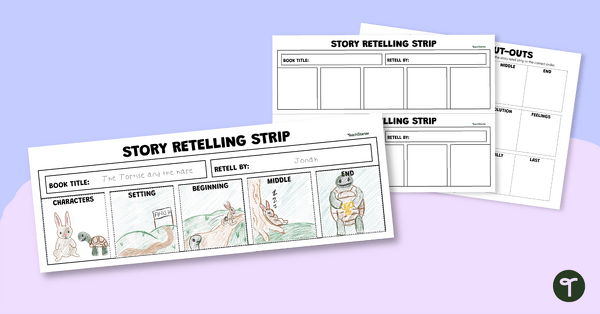
Story Retelling Strips
Explore a story with your students with this story-retelling cut-and-paste worksheet.
- Plus Plan
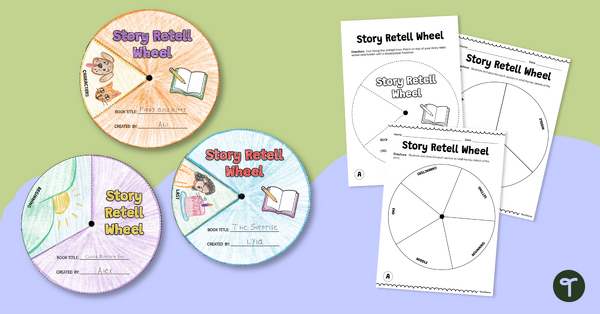
Retelling Stories Wheel Template
Explore story retells with this engaging story retell wheel template.
- Plus Plan
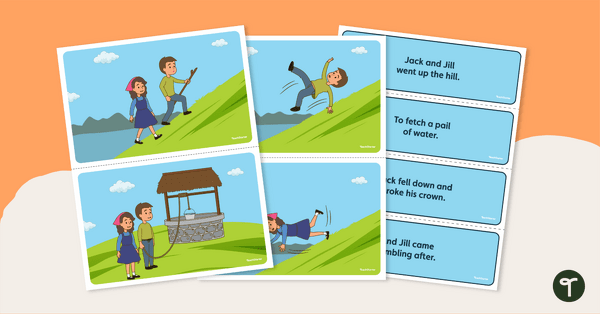
Jack and Jill Nursery Rhyme- Retell Activity Cards
Teach your students about retelling with this set of sequencing cards for Jack and Jill.
- Plus Plan

3 Billy Goats Gruff Retelling Activity Cards
Teach your students about retelling with this set of sequencing cards for 3 Billy Goats Gruff.
- Plus Plan
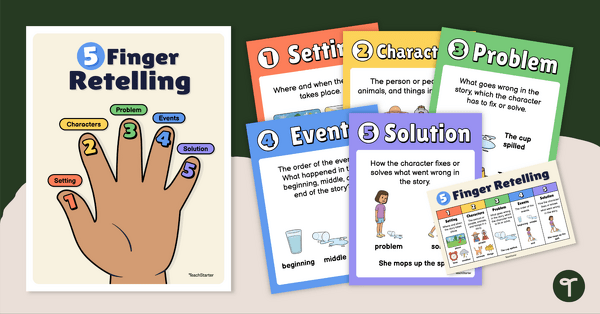
5 Finger Retell Classroom Posters
Guide students through the 5 finger retell process with this set of classroom posters and individual student guide.
- Plus Plan
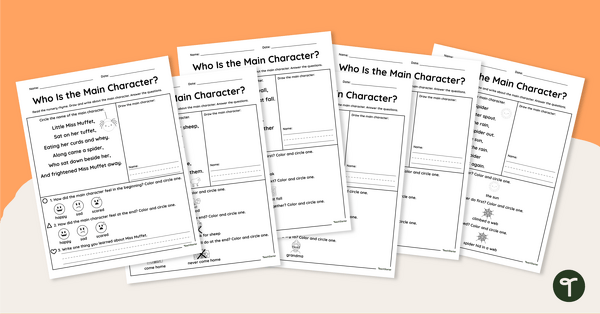
Who Is the Main Character? Worksheets
Practice identifying the main characters in nursery rhymes with this set of worksheets for young learners.
- Literary Elements Worksheets
- Literary Elements Templates
- Literary Elements Games
- Literary Elements for Kindergarten
- Literary Elements for 1st Grade
- Literary Elements for 2nd Grade
- Literary Elements for 3rd Grade
- Literary Elements for 4th Grade
- Literary Elements for 5th Grade
- Literary Elements for 6th Grade